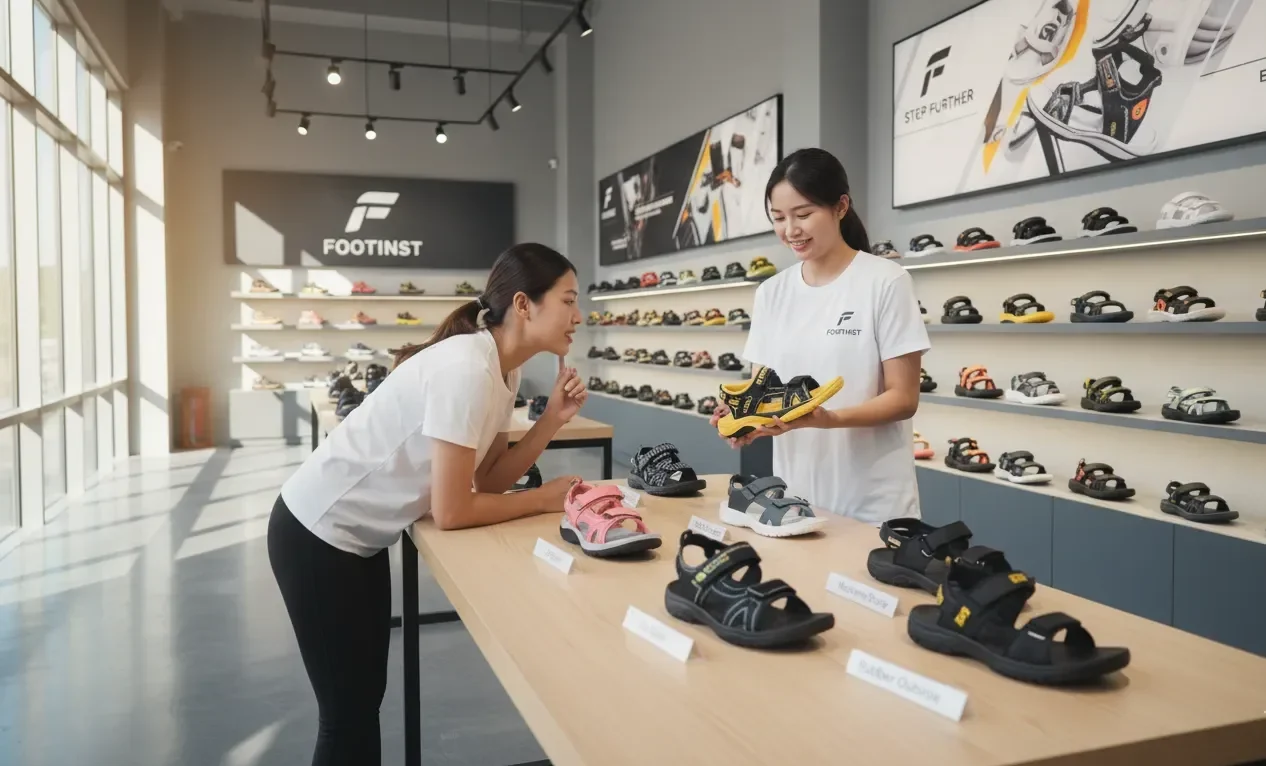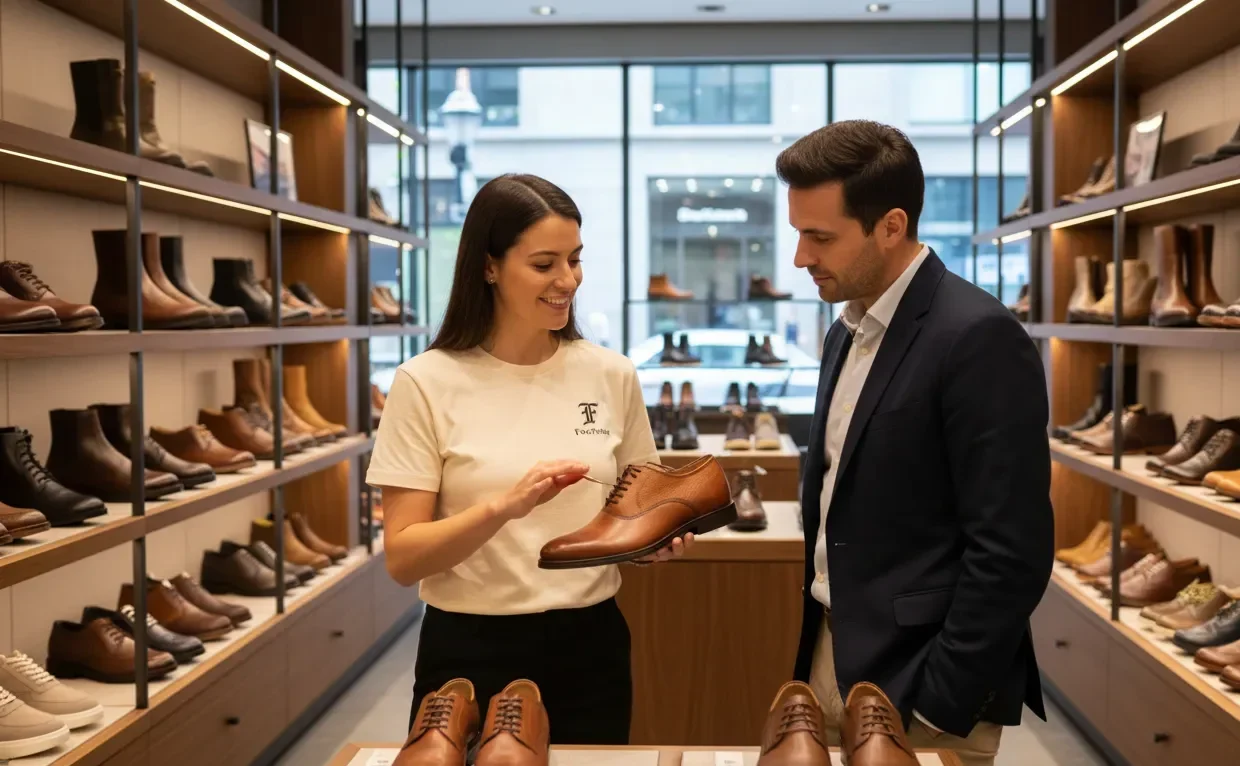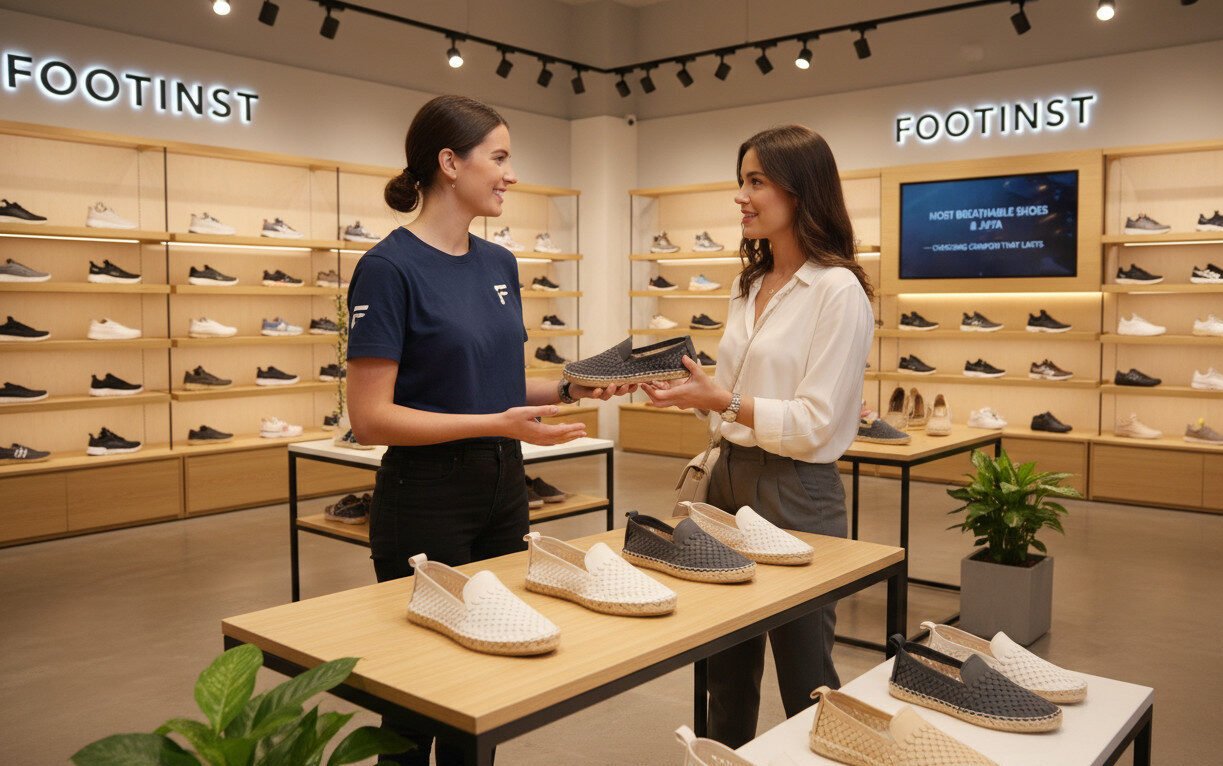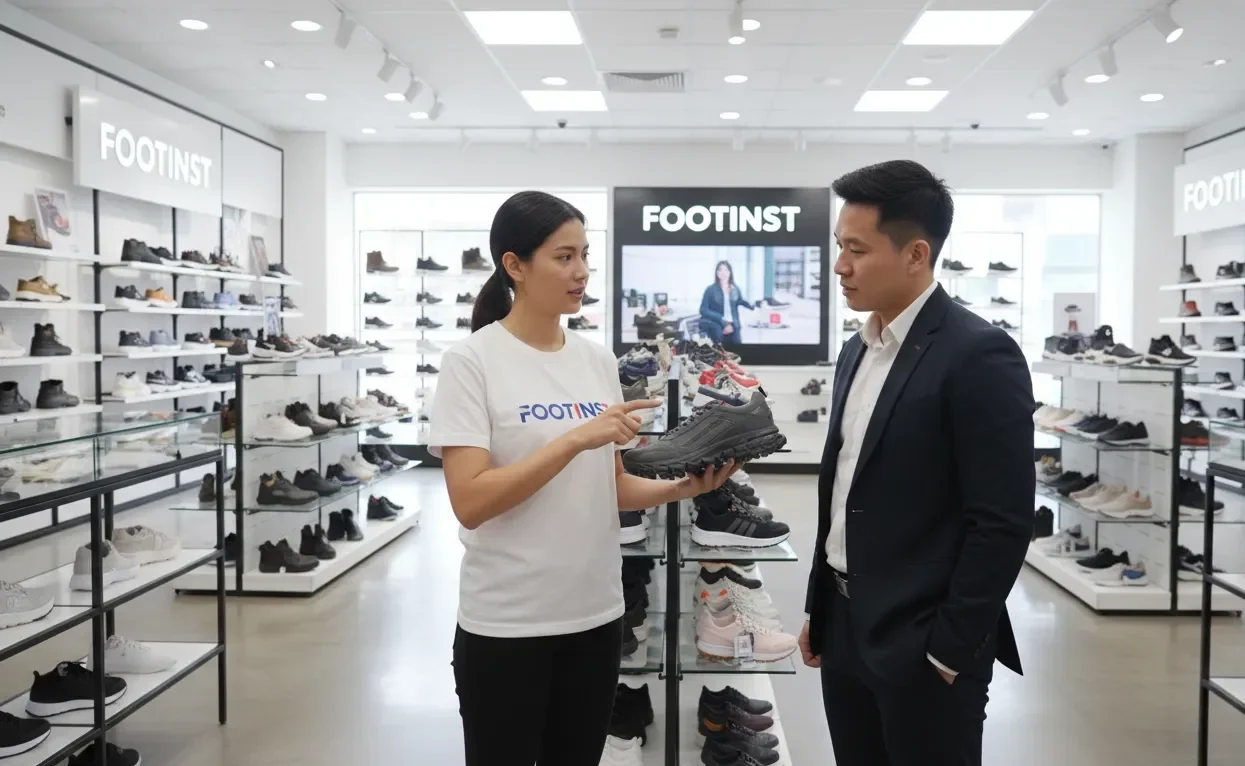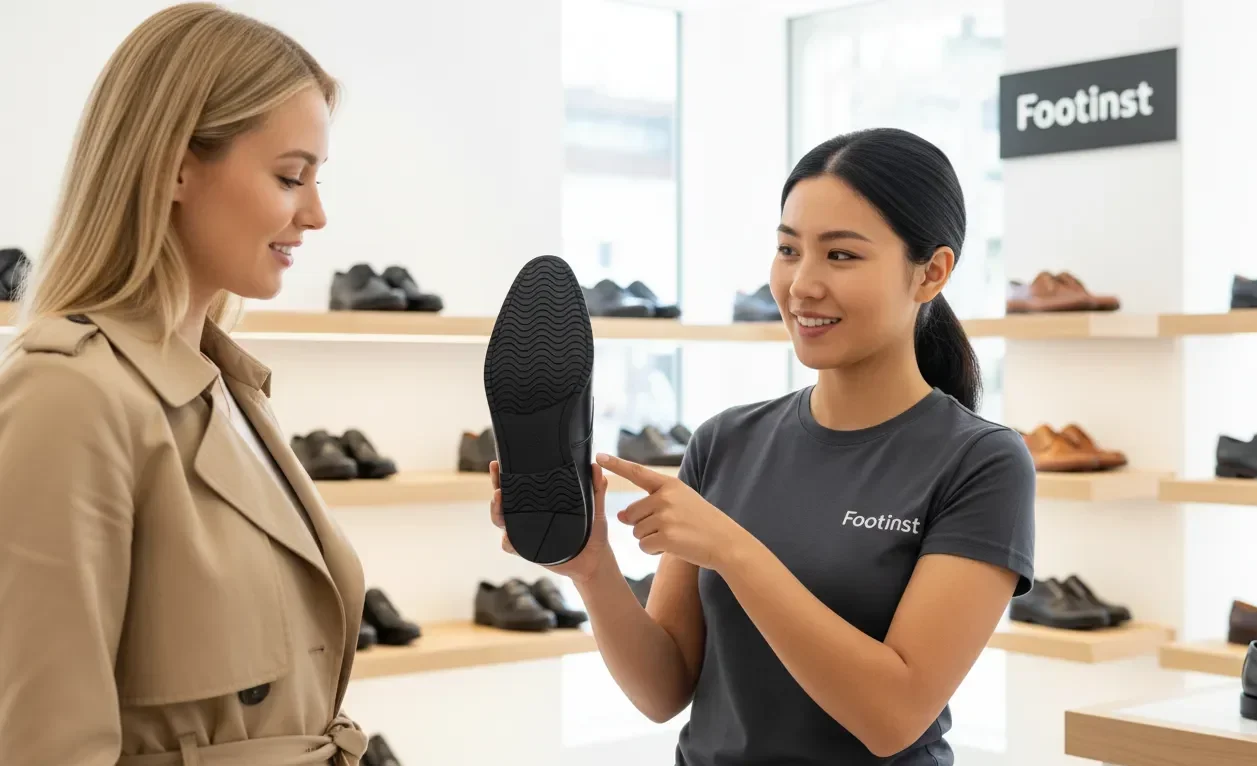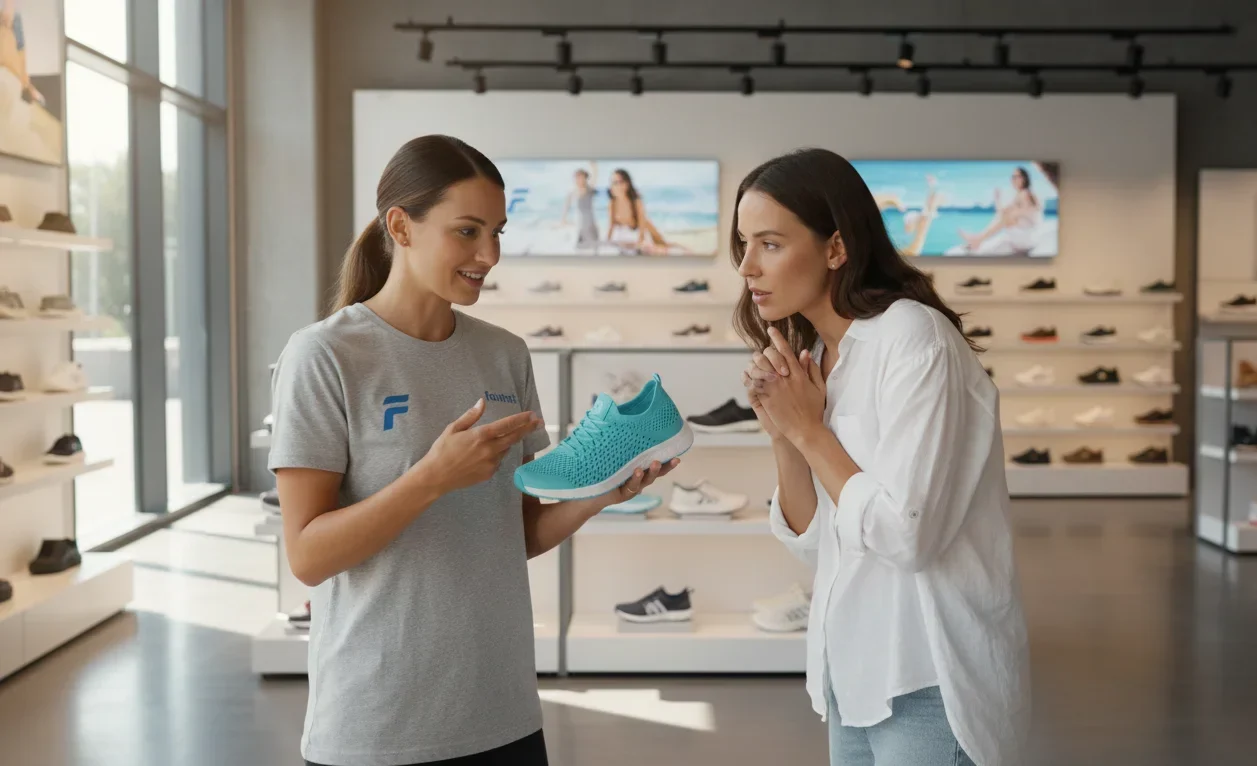Ultimate Guide to Long-Distance Walking Shoes – Comfort, Support & Endurance Tips
Choosing the Right Walking Shoes Changes Everything
Long-distance walking is more than just putting one foot in front of the other. The right pair of walking shoes can prevent fatigue, reduce pain, and make every mile enjoyable. Choosing the wrong shoes, however, often leads to blisters, sore arches, heel pain, and joint stress.
Store Insight: “From our experience, nearly 40% of customers complain of foot pain after long walks because they underestimated the importance of cushioning and arch support.” – Experienced Shoe Specialist
Why Walking Shoes Matter
- Cushioning: Absorbs shock on hard surfaces like concrete or asphalt.
- Support: Keeps arches aligned and reduces overpronation.
- Comfort: Prevents blisters, pinching, and sore toes.
- Endurance: Proper shoes help you walk longer without fatigue.
Quick Tip
Always try walking shoes on later in the day when feet are slightly swollen. This ensures the perfect fit and comfort for long-distance walks.
Key Considerations Before Buying
- Foot Type: Flat, high-arch, or neutral—each needs different support.
- Walking Terrain: Pavement, trails, or mixed surfaces affect outsole choice.
- Shoe Material: Breathable fabrics keep feet fresh and reduce sweat.
- Fit: Snug at the heel, roomy at the toes.
- Activity Duration: Longer walks need more cushioning and durable insoles.
Practical Example
- A customer preparing for a charity 20-mile walk tried generic sneakers. After 5 miles, heel pain and blisters appeared. Switching to cushioned, arch-support walking shoes allowed her to complete the walk comfortably, illustrating how critical the right shoes are for long-distance walking.
Know Your Foot Type – Flat, High Arches & Neutral Explained
Not all feet are created equal. Knowing your foot type is the first step toward choosing long-distance walking shoes that provide proper support, comfort, and endurance.
Expert Insight: “In our store, many customers select shoes based on style alone. Foot type often gets ignored, which is why pain and fatigue appear quickly on long walks.” – Shoe Specialist
1. Flat Feet
- Characteristics: Minimal arch, foot almost touches the ground.
- Challenges: Overpronation, ankle instability, foot fatigue.
- Shoe Tips:
- Choose shoes with firm arch support.
- Consider motion-control or stability sneakers.
- Cushioned midsoles help absorb shock.
3. Neutral Arches
- Characteristics: Balanced arch, even weight distribution.
- Challenges: Fewer problems, but improper shoes still cause fatigue.
- Shoe Tips:
- Moderate cushioning and support.
- Lightweight shoes are ideal for long-distance walking.
- Flexibility and breathability improve endurance.
Pro Tip: Knowing your foot type helps you select shoes that prevent blisters, fatigue, and long-term joint issues.
2. High Arches
- Characteristics: Noticeable arch, weight mainly on heel and ball of foot.
- Challenges: Less natural shock absorption, prone to plantar fasciitis.
- Shoe Tips:
- Look for extra cushioning in midsole and heel.
- Use soft, flexible shoes that mold to foot shape.
- Consider gel or memory-foam insoles for comfort.
4. How to Check Your Foot Type at Home
- Wet your foot and step on a piece of paper.
- Flat Foot: Most of the foot imprint is visible.
- High Arch: Only heel and ball of foot leave imprint.
- Neutral: Heel and ball connected by a narrow arch.
Practical Store Example
A runner with flat feet switched to stability walking sneakers. After a 10-mile test walk, foot pain decreased and posture improved, proving the importance of matching shoes to foot type.
Cushioning & Shock Absorption – Step Without Strain
Cushioning is the heart of a comfortable long-distance walk. Proper shock absorption reduces stress on your feet, knees, and hips, keeping you energized for every mile.
Expert Insight: “From our store experience, about 50% of walking-related complaints stem from inadequate cushioning. Even minor improvements in midsole support make a huge difference.” – Experienced Shoe Specialist
1. Why Cushioning Matters
- Impact Reduction: Every step on pavement sends shock through your joints. Cushioned shoes absorb it.
- Fatigue Prevention: Proper midsoles distribute pressure, reducing soreness.
- Blister Reduction: Softer surfaces prevent friction hotspots.
3. Step-by-Step Cushioning Check
- Press the Insole: Test for softness and rebound.
- Walk Indoors: Notice heel, arch, and forefoot comfort.
- Check Flexibility: Ensure shoe bends at the ball of foot, not mid-arch.
- Assess Fatigue: Stand and walk for 10–15 minutes to test shock absorption.
4. Practical Example
A hiker tried lightweight sneakers without proper cushioning. After 3 miles, heel and forefoot pain appeared. Switching to gel-cushioned long-distance sneakers allowed 10+ miles with minimal fatigue.
Quick Tip
For long-distance walking, don’t compromise cushioning for style or lightness. Even slightly heavier shoes with good midsole support often outperform ultra-light sneakers for comfort and endurance.
2. Types of Cushioning Materials
| Material | Benefits | Best For |
|---|---|---|
| EVA Foam | Lightweight, shock-absorbing | Long walks, daily use |
| Gel | Extra heel & forefoot cushioning | Flat feet, plantar fasciitis |
| Memory Foam | Molds to foot shape | Custom comfort, mid-arches |
| PU Foam | Durable, supportive | Extended walks on hard surfaces |
Store Tip: A combination of gel + EVA often works best for long-distance walking shoes.
Arch Support Essentials – Keep Your Feet Aligned
Arch support is crucial for long-distance walking comfort. Properly supported arches prevent fatigue, reduce foot strain, and maintain correct posture, ensuring every step feels effortless.
Expert Insight: “In-store, many customers with flat feet or high arches underestimate arch support. The right sneaker or insole often solves pain that generic shoes can’t fix.” – Shoe Specialist
1. Why Arch Support Matters
- Maintains natural foot alignment.
- Reduces risk of plantar fasciitis, shin splints, and knee pain.
- Improves walking efficiency over long distances.
2. Types of Arch Support
| Foot Type | Recommended Support | Benefits |
|---|---|---|
| Flat Feet | Firm, motion-control or stability shoes | Reduces overpronation, prevents fatigue |
| High Arches | Cushioned, flexible shoes with arch inserts | Distributes pressure evenly, absorbs shock |
| Neutral Arches | Moderate support sneakers | Balanced comfort, prevents strain |
3. Practical Advice for Choosing Arch Support
- Test Flexibility: Shoe should bend at ball of foot, not mid-arch.
- Feel the Arch: Stand and walk indoors; arch should feel supported but not pinched.
- Consider Custom Insoles: For flat or very high arches, removable insoles or orthotics offer personalized support.
- Gradual Adjustment: Switch to supportive shoes slowly if you’re used to flat or minimalist sneakers.
4. Real-Life Example
• A customer with high arches experienced midfoot pain after long walks. After switching to cushioned walking sneakers with arch-support insoles, she completed 10 km walks comfortably — showing how proper arch support changes everything.
Breathable & Moisture-Wicking Materials – Stay Fresh Miles After Miles
Long-distance walking can make your feet hot and sweaty. Choosing breathable shoes and moisture-wicking socks keeps feet dry, comfortable, and blister-free, especially during extended walks or warm weather.
Expert Insight: “Many walkers come back complaining of soggy, uncomfortable feet. Breathable fabrics and proper sock combinations solve most issues.” – Experienced Shoe Specialist
1. Why Breathability Matters
- Reduces Sweat: Prevents moisture buildup inside shoes.
- Prevents Odor: Dry feet reduce bacterial growth.
- Increases Comfort: Cooler feet improve endurance and reduce chafing.
2. Best Shoe Materials for Long-Distance Walking
| Material | Benefits | Best Use |
|---|---|---|
| Mesh Knit | Highly breathable, lightweight | Pavement, indoor walking |
| Natural Fibers (Cotton blends) | Soft, moisture-absorbing | Casual long walks |
| Engineered Synthetic Fabrics | Quick-drying, flexible | Trail walks, humid climates |
| Perforated Leather | Durable, moderate breathability | Urban walking or mixed surfaces |
3. Sock Recommendations
- Moisture-Wicking Socks: Nylon blends, merino wool, or technical fibers.
- Proper Fit: Avoid loose or tight socks that cause friction.
- Layering for Cold Weather: Thin breathable liner socks under thicker warm socks maintain comfort without sweat buildup.
4. Practical Example
- A walker wore regular cotton sneakers on a 15 km summer walk. By mile 7, blisters and foot odor appeared. Switching to mesh sneakers with moisture-wicking socks kept her feet dry, blister-free, and comfortable for the full distance.
Perfect Fit & Toe Box – Prevent Blisters and Pinching
Even the most cushioned and supportive sneakers can fail if the fit isn’t right. A proper fit and roomy toe box prevent blisters, black toenails, and discomfort, ensuring every step of a long-distance walk is pain-free.
Store Insight: “Many long-distance walkers buy shoes based on size alone, ignoring width and toe space. Proper fit solves 80% of common walking complaints.” – Experienced Shoe Specialist
1. Why Fit & Toe Box Matter
- Prevent Blisters: Avoids friction between toes and shoe material.
- Allow Toe Movement: Toes should spread naturally during each step.
- Reduce Fatigue: Crowded toes cause pain and accelerate tiredness.
2. How to Check Shoe Fit
- Heel Fit: Heel should feel snug, no slipping.
- Toe Box: At least ½ inch space between longest toe and shoe front.
- Width: Feet shouldn’t feel compressed on sides.
- Try With Walking Socks: Wear the socks you’ll use during long walks.
- Walk Indoors: Test for rubbing, pinching, or pressure points.
3. Practical Store Tips
- Measure feet later in the day when feet are slightly swollen.
- For wide or narrow feet, select brands offering multiple width options.
- Consider stretchable fabrics or shoes with adjustable laces for extra comfort.
4. Real-Life Example
- A walker with slightly wide feet wore standard sneakers for a 10 km walk. By mile 4, toes were pinched and blisters formed. Switching to walking shoes with a spacious toe box and flexible upper allowed her to finish the walk comfortably.
Outsole Grip & Traction – Walk Confidently on Any Surface
Walking long distances means encountering different surfaces—from smooth pavements to rugged trails. Shoes with proper outsole grip and traction prevent slips, reduce fatigue, and improve stability.
Expert Insight: “Many customers underestimate outsole traction. A shoe that grips properly prevents falls and improves confidence, especially on wet or uneven surfaces.” – Experienced Shoe Specialist
1. Why Grip & Traction Matter
- Prevent Slips: Essential on wet or uneven terrain.
- Support Natural Foot Movement: Proper traction reduces ankle twists.
- Energy Efficiency: Shoes that grip well let you walk longer without overcompensating for slips.
2. Outsole Types & Their Benefits
| Outsole Material | Best For | Features |
|---|---|---|
| Rubber | Pavement, urban walking | Durable, slip-resistant |
| Vibram or Multi-Density | Trail & uneven terrain | Excellent grip, flexible |
| EVA or Lightweight Foam | Indoor walking or flat surfaces | Soft, lightweight, minimal traction |
| Lugged Outsoles | Trail & hiking | Deep treads for rough terrain |
3. Practical Tips for Choosing Traction
- Consider your primary walking environment (urban, trail, mixed).
- Check outsole flexibility and tread pattern.
- Avoid overly flat shoes on slippery or uneven paths.
- Test shoes on slightly wet or textured surfaces before long-distance walks.
4. Real-Life Example
- A customer wore lightweight sneakers with smooth soles for a 12 km mixed-terrain walk. Slipping and ankle discomfort occurred. Switching to walking shoes with rubber outsoles and moderate lugs improved stability and comfort for the entire distance.
Lightweight vs Stability Sneakers – Pick What Works for You
When it comes to long-distance walking, the choice between lightweight sneakers and stability shoes can impact your comfort, endurance, and foot health. Understanding the trade-offs ensures every mile feels effortless.
Expert Insight: “Customers often assume lighter shoes are always better. In reality, stability sneakers often outperform ultra-light sneakers for long-distance walks, especially on mixed terrain.” – Shoe Specialist
Lightweight vs Stability Sneakers — Pick What Works for You
When it comes to long-distance walking, the choice between lightweight sneakers and stability shoes can impact your comfort, endurance, and foot health. Understanding the trade-offs ensures every mile feels effortless.
1. Lightweight Sneakers
- Pros:
- Less weight = less fatigue.
- Flexible and breathable.
- Great for neutral arches or well-conditioned feet.
- Cons:
- Minimal arch support.
- Less shock absorption on hard surfaces.
- Can lead to fatigue or foot strain on very long walks.
2. Stability Sneakers
- Pros:
- Firm arch support and structured midsoles.
- Superior shock absorption and foot alignment.
- Ideal for flat feet, overpronation, or long walking sessions.
- Cons:
- Slightly heavier than lightweight sneakers.
- Less flexibility for short, casual walks.
3. How to Choose
- Assess Foot Type: Flat or high-arch feet benefit more from stability shoes.
- Evaluate Walking Terrain: Stability shoes handle uneven or hard surfaces better; lightweight sneakers excel on soft pavements or short walks.
- Consider Distance: For 10+ km walks, stability often prevents fatigue and joint pain.
- Test Indoors: Walk 10–15 minutes and notice foot support, heel grip, and overall comfort.
4. Practical Store Example
Quick Tip
If you’re unsure, hybrid walking shoes that combine moderate support with lightweight design offer a best-of-both-worlds solution for long-distance walking.
Breaking In Your Walking Kicks – Tips for Safe Wear
Even the best long-distance walking shoes need a proper break-in period. Gradually wearing new shoes prevents blisters, sore feet, and joint fatigue, ensuring every step feels comfortable.
Expert Insight: “Many walkers rush into long walks with brand-new shoes. Our store sees complaints of pain and blisters that could have been avoided with a proper break-in routine.” – Experienced Shoe Specialist
Breaking In Your Walking Kicks – Smart Comfort Steps
1. Why Breaking In Matters
- ●Softens shoe material and molds to foot shape.
- ●Reduces pressure points and friction areas.
- ●Allows arch support and cushioning to adjust to your feet.
2. Step-by-Step Break-In Process
- Start Small: Wear shoes for 1–2 hours indoors on smooth surfaces.
- Increase Gradually: Add short walks of 1–2 km over the next few days.
- Check for Hot Spots: Monitor for blisters or rubbing.
- Adjust Socks: Use your intended walking socks to test fit.
- Insoles Optional: Add cushioned insoles if extra support is needed.
- Full Walk Test: Only after 3–5 short sessions, attempt longer walks.
3. Practical Store Tips
- ●Customers with wide feet benefit from stretchable fabrics or adjustable laces.
- ●Slightly dampening leather shoes can help soften the upper for a better fit.
- ●Rotate new shoes with older pairs to avoid overuse of stiff shoes.
4. Real-Life Example
A walker started a 15 km hike right after buying new sneakers. Blisters and heel pain forced an early stop. After a 5-day break-in plan, she finished a 12 km walk comfortably — proving the power of gradual adaptation.
DIY Comfort Hacks – Insoles, Heel Pads & Socks
Sometimes, even the best long-distance walking shoes need a little extra customization. Using the right insoles, heel pads, and socks can drastically improve comfort and reduce fatigue.
Expert Insight: “Many walkers think new shoes are perfect out of the box. A few DIY tweaks often make a huge difference in comfort, especially for longer walks.” – Shoe Specialist
DIY Comfort Hacks – Insoles, Heel Pads & Socks
Even the best walking shoes sometimes need small DIY tweaks. Using insoles, heel pads, and proper socks can dramatically improve comfort and reduce fatigue.
1. Insoles – Extra Cushion & Support
- ●Gel or Memory Foam Insoles: Absorb shock and mold to your feet.
- ●Custom Orthotics: Ideal for flat feet or high arches.
- ●Replace Old Insoles: Don’t rely on worn-out factory insoles.
💡 Pro Tip: Remove the original insole if adding a thicker one to avoid tightness.
2. Heel Pads – Prevent Pain & Slipping
- ●Cushioned heel pads reduce heel pain and blisters.
- ●Help with heel slipping, keeping foot stable in shoe.
- ●Great for slightly loose shoes without compromising comfort.
3. Socks – Small Detail, Big Comfort
- ●Moisture-Wicking Socks: Keep feet dry and blister-free.
- ●Double Layer Socks: Thin liner socks under thicker ones for longer walks.
- ●Proper Fit: Avoid loose socks that bunch up or tight socks that restrict circulation.

